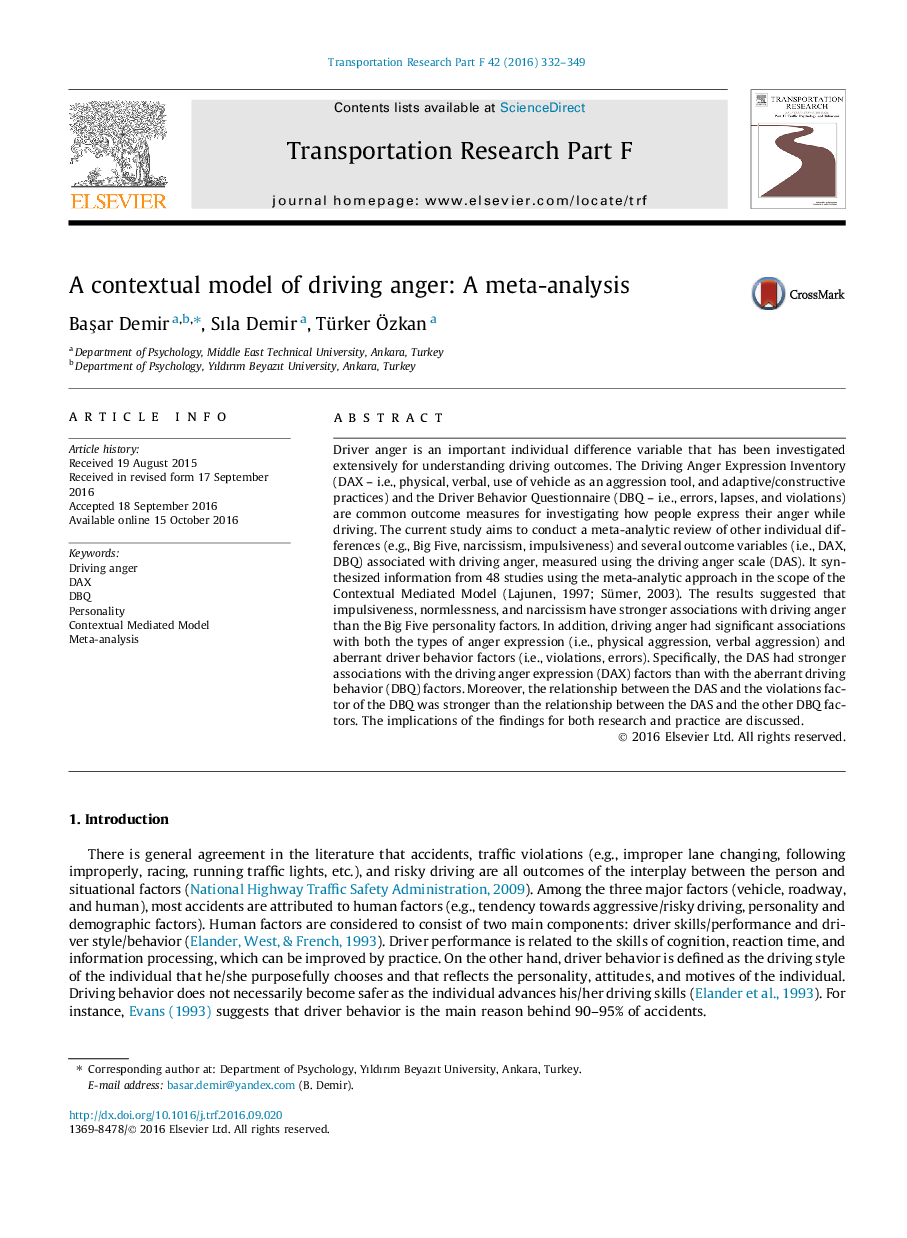| کد مقاله | کد نشریه | سال انتشار | مقاله انگلیسی | نسخه تمام متن |
|---|---|---|---|---|
| 5037512 | 1370225 | 2016 | 18 صفحه PDF | دانلود رایگان |
- Personality and outcome variables related to driving anger were reviewed.
- Meta-analytical methods were used.
- Sensation seeking, impulsiveness, normlessness and narcissism were related to the DAS.
- Violations had the strongest relationship with the DAS, among the DBQ factors.
- Verbal aggression had the strongest relationship with the DAS, among the DAX factors.
Driver anger is an important individual difference variable that has been investigated extensively for understanding driving outcomes. The Driving Anger Expression Inventory (DAX - i.e., physical, verbal, use of vehicle as an aggression tool, and adaptive/constructive practices) and the Driver Behavior Questionnaire (DBQ - i.e., errors, lapses, and violations) are common outcome measures for investigating how people express their anger while driving. The current study aims to conduct a meta-analytic review of other individual differences (e.g., Big Five, narcissism, impulsiveness) and several outcome variables (i.e., DAX, DBQ) associated with driving anger, measured using the driving anger scale (DAS). It synthesized information from 48 studies using the meta-analytic approach in the scope of the Contextual Mediated Model (Lajunen, 1997; Sümer, 2003). The results suggested that impulsiveness, normlessness, and narcissism have stronger associations with driving anger than the Big Five personality factors. In addition, driving anger had significant associations with both the types of anger expression (i.e., physical aggression, verbal aggression) and aberrant driver behavior factors (i.e., violations, errors). Specifically, the DAS had stronger associations with the driving anger expression (DAX) factors than with the aberrant driving behavior (DBQ) factors. Moreover, the relationship between the DAS and the violations factor of the DBQ was stronger than the relationship between the DAS and the other DBQ factors. The implications of the findings for both research and practice are discussed.
Journal: Transportation Research Part F: Traffic Psychology and Behaviour - Volume 42, Part 2, October 2016, Pages 332-349
